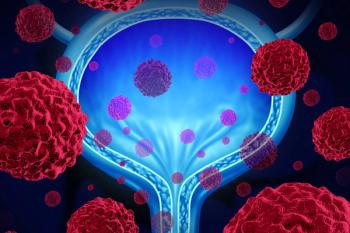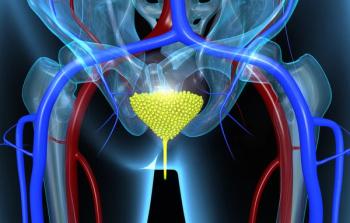
Poorer Survival, Higher Costs With Trimodal Therapy in Bladder Cancer
Patients with muscle-invasive bladder cancer who underwent trimodal therapy had significantly poorer survival than those who underwent radical cystectomy alone.
Patients with muscle-invasive bladder cancer (MIBC) who underwent trimodal therapy with transurethral resection of the bladder as well as radiotherapy and chemotherapy had significantly poorer survival than those who underwent radical cystectomy alone, according to a new study. Trimodal therapy was also associated with substantially increased healthcare spending.
Neoadjuvant chemotherapy followed by radical cystectomy is the currently recommended therapy for MIBC. “Given the concerns regarding the non-negligible morbidity and mortality associated with radical cystectomy along with patients often being older and having increased comorbidities, clinicians…and patients have sought alternative treatments,” wrote study authors led by Stephen B. Williams, MD, of the University of Texas Medical Branch in Galveston. The use of “bladder-sparing” approaches including transurethral resection followed by chemotherapy and radiotherapy has increased, but there are limited data comparing the approaches.
The new study included 3,200 adults age 66 years and older diagnosed with clinical stage T2 to T4a bladder cancer between 2002 and 2011. Propensity score matching was used, yielding 687 patients who underwent trimodal therapy and 687 who underwent radical cystectomy alone. The results of the analysis were
Patients who underwent trimodal therapy had significantly decreased overall survival, with a hazard ratio (HR) of 1.49 (95% CI, 1.31–1.69). They also had significantly decreased cancer-specific survival, with an HR of 1.55 (95% CI, 1.32–1.83). This was true across all stages of disease with the exception of stage IV; in those patients, no significant differences were seen between treatments.
Approximately half of those who underwent trimodal therapy received cisplatin or fluorouracil and mitomycin-C, and these were associated with better survival than other chemotherapy agents. Also, those who received 18 or more fractions of radiotherapy had better overall survival than those who received fewer than 18 fractions.
The median total costs of care were significantly higher with trimodal therapy than with radical cystectomy. At 90 days, the median costs were $80,174 and $69,181, respectively, for a median difference of $8,964. At 180 days, the median difference jumped to $63,771. An analysis that extrapolated those figures to the full US population suggests that trimodal therapy was associated with an excess spending of $335 million compared with radical cystectomy for those diagnosed with MIBC in 2011.
“Trimodal therapy was associated with significantly decreased overall and cancer-specific survival at increased costs when compared with radical cystectomy,” the authors concluded. “Although observational and retrospective and with inherent selection bias, this study has important health policy implications regarding the appropriate use of high value-based care among patients who are candidates for either treatment.”
Newsletter
Stay up to date on recent advances in the multidisciplinary approach to cancer.

















































































